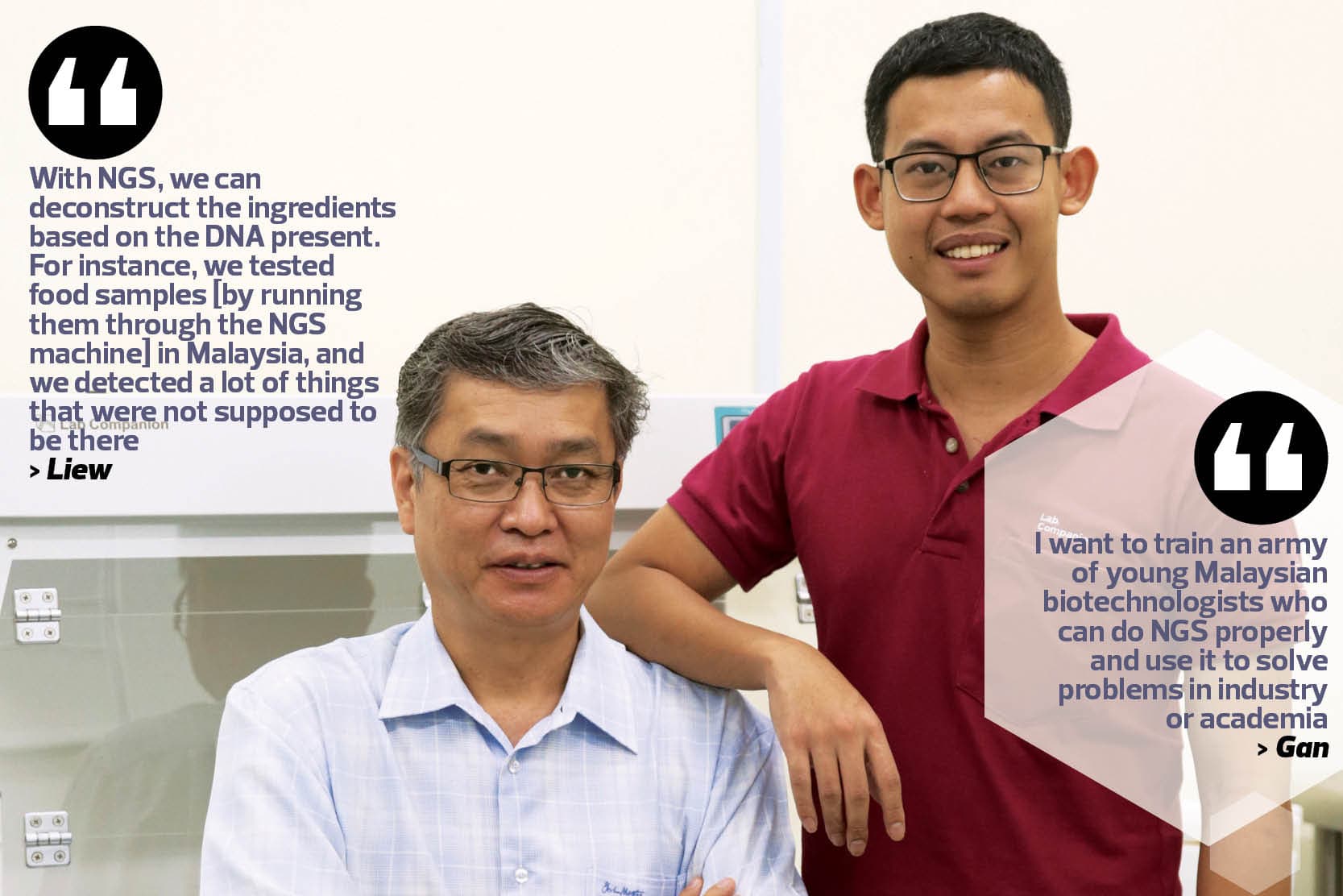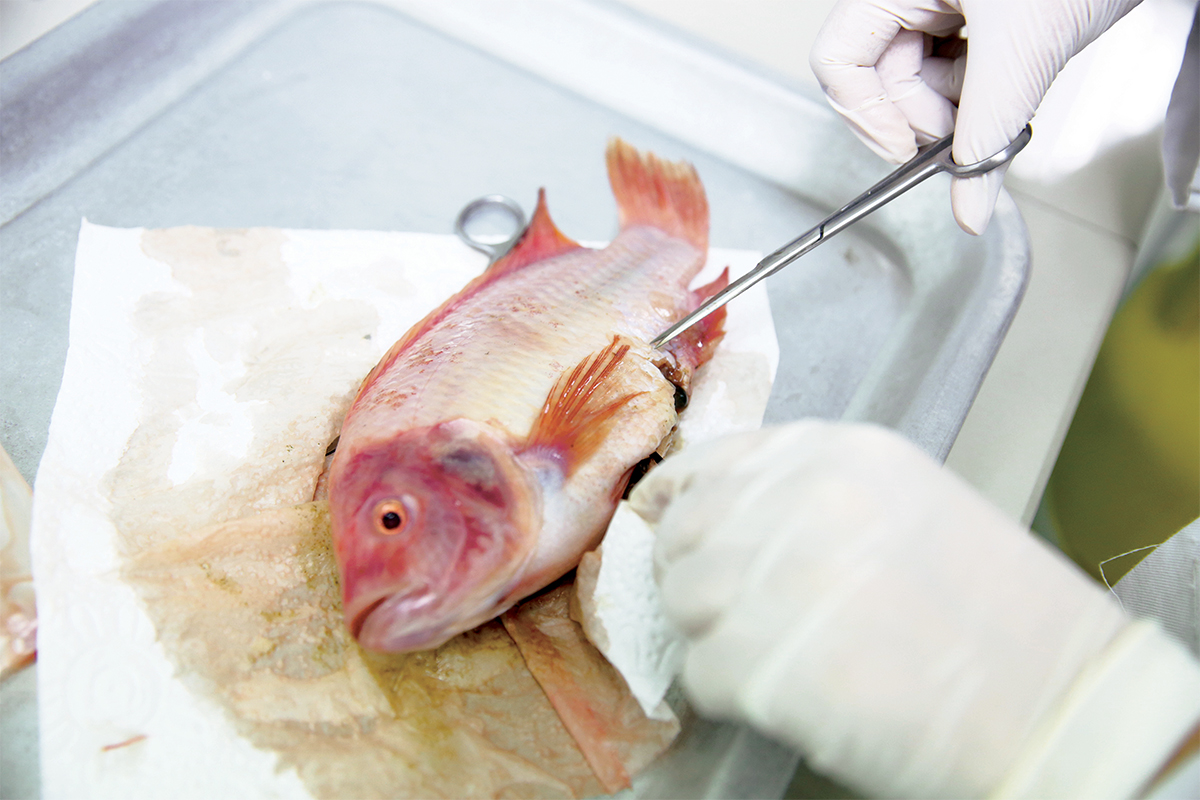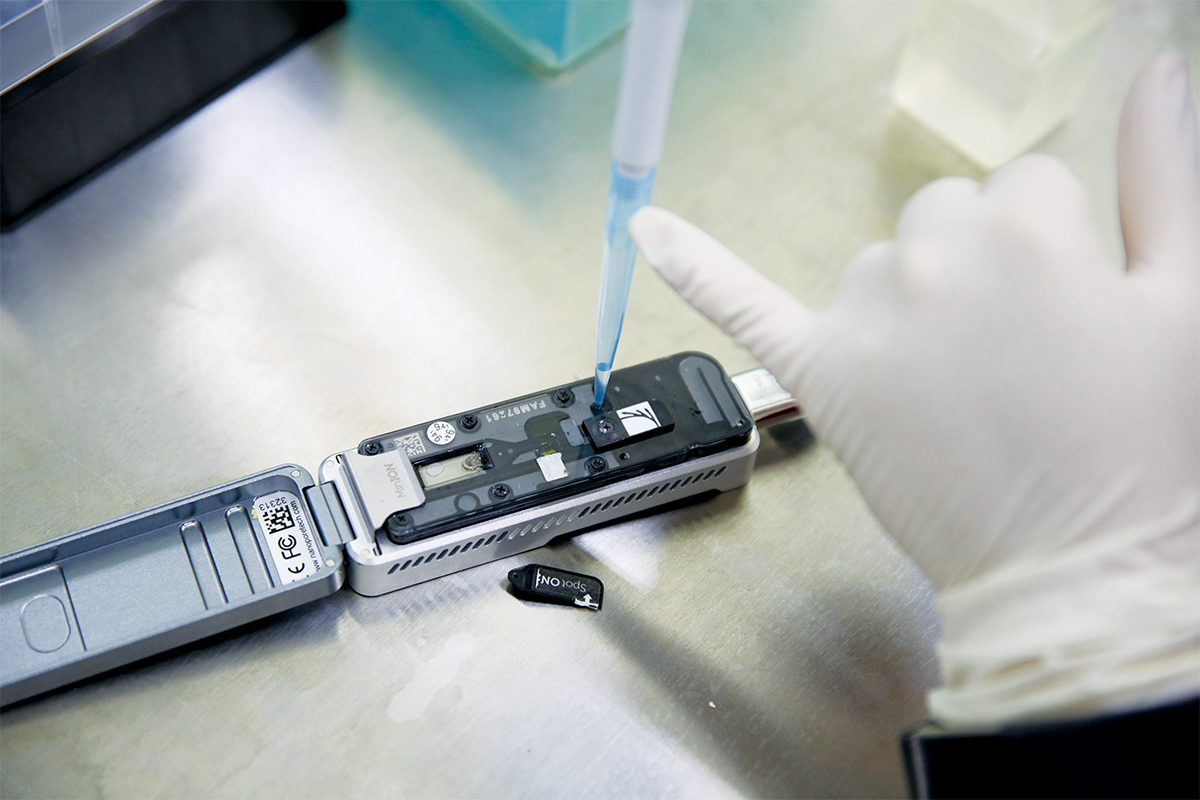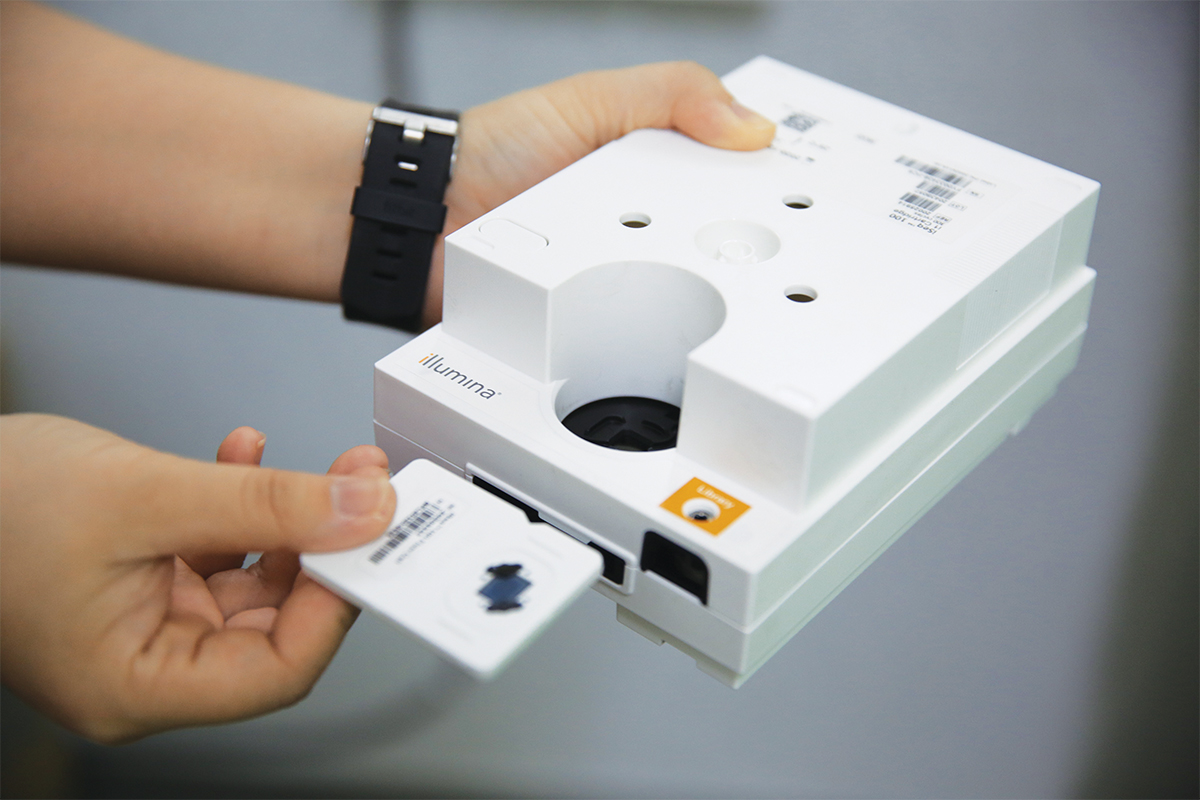
This article first appeared in Enterprise, The Edge Malaysia Weekly on September 14, 2020 - September 20, 2020
The Musang King durian had its genome sequenced for the first time in 2017. The findings, which also identified the genes responsible for the fruit’s pungent odour, were published in a leading international journal and covered by news portals globally.
The research was done out of Singapore. This is something that GeneSEQ Sdn Bhd chief scientific officer Dr Gan Han Ming has always found a shame.
“They sequenced our national fruit! Next time, we must not let similar research topics with good publication potential be done by those outside of Malaysia,” he says.
“I was part of the team that sequenced the genome of the Asian Arowana fish at Monash University in 2016. It was the first Malaysian fish genome to be sequenced. And when I came back from Australia this year, it was still the only one.”
DNA sequencing reveals the order of the building blocks that make up a DNA molecule. By reading that order, scientists can determine the genetic information of a DNA segment. From there, they can find out about the particular genes that cause diseases or the pungent smell of durian, for instance. By analysing the unique genetic sequence of different organisms, they can also use this information for identification purposes.
Gan, who has a PhD in microbiology, was responsible for setting up the genomics facility at Monash University. Later, he set up the genomics facility at Deakin University in Australia, where he lived for more than two years. He officially returned to Malaysia this year to join GeneSEQ.
GenseSEQ is one of the few end-to-end Next Generation Sequencing (NGS) service providers in Malaysia for non-medical uses, according to Gan. NGS is a DNA sequencing technology that has revolutionised the field of genomic research with its speed and sequencing volume.
“With NGS, we can deconstruct the ingredients based on the DNA present. For instance, we tested food samples [by running them through the NGS machine] in Malaysia, and we detected a lot of things that were not supposed to be there,” says GeneSEQ co-founder Robin Liew.
Liew has a background in microbiology. He also owns Lab-Ind Resource Sdn Bhd, a biotechnology company that works in food safety compliance and monitoring. He co-founded GeneSEQ in January 2019.
NGS technology has improved drastically over the past decade. It can now sequence an entire human genome in a single day, compared with an older sequencing technology that took over a decade to deliver the final draft. GeneSEQ performs NGS with the minION, a pocket-sized DNA sequencing device, which is the latest generation of sequencing technology, according to Gan.
“NGS is very popular in other countries, whether in academia or industry. But when I came back to Malaysia, I realised that the growth was a bit lacklustre in the country. People know about the technology, but they don’t really use it. Obviously, there are researchers using NGS. However, the momentum of adoption is a little slow,” he says.
Gan’s return to Malaysia was at a rather unfortunate yet opportune time. When the Covid-19 pandemic struck, GeneSEQ had the opportunity to collaborate with the University of Malaya (UM) to sequence the coronavirus, the first in the country. This had to be done so scientists could study the virus’ origins and how it was mutating in Malaysia.
“By comparing how similar the genome of one Covid-19 strain is to another, we can obtain useful information for contact tracing. Strains that share identical genome sequences will have a high likelihood of originating from the same cluster. UM did the country a big favour by publishing the genome of a Covid-19 strain linked to the mass religious gathering [the biggest cluster in the country],” says Gan.
At the same time, he also took the opportunity to sequence local vegetables such as petai and ulam raja. He was the first in the world to do so. “I was surprised to find out that there was no DNA information of these vegetables in public databases,” he says.
If the DNA information of such a common vegetables are not found in public databases, then they cannot be identified by scientists in the future if they find their unique DNA sequence in a random sample. “If no one has done the groundwork before, no one will know which plant the DNA sequence belongs to. Someone should do it for such common plants in Malaysia,” says Gan.
The uses of NGS
GeneSEQ uses the technology to examine the quality of produce from the food, agriculture and aquaculture industries. It is also used for environmental monitoring programmes and by researchers in academia.
Let’s say the company receives a meat sample, of which the ingredients are unknown. GeneSEQ can use NGS to sequence the sample. From the results, the company can find out the ingredients of the sample based on the unique DNA sequence of each organism present. “For instance, we can generate 10,000 DNA sequences and find out that 50% of these belong to chicken, 40% to bovine and 10% to pigs,” says Gan.
This can be useful to ensure the authenticity and quality of halal and vegetarian food. The company recently passed the FAPAS 2987 Meat Authenticity (Chicken) proficiency test, which certifies the competency of its analysis.
The technology commonly used in these industries is the Polymerase Chain Reaction (PCR), which is offered by Liew’s Lab-Ind. PCR tests are used to make many copies of a specific DNA sequence to facilitate detection.
But PCR’s capabilities are more limited than those of NGS, according to Gan. “For instance, when you test halal food, the PCR test will only tell you if porcine DNA is present. If you want to test horse meat, you will need to use another PCR test,” he says.
“With NGS, rather than doing multiple tests, you can just sequence everything in the food sample. From there, you can identify all types of animal meat present in the food.”
Another area where NGS could be more useful than PCR is in monitoring food spoilage. “The conventional method [PCR] requires you to test for salmonella, E. coli or other bacteria separately. But you could miss the other pathogens if you did not use the right test,” Gan points out.
NGS can also be very effective in detecting food fraud. “Sometimes, there is adulteration. The end product could be in powder form, so it is difficult to verify the ingredients. With NGS, we can know the purity of the food item by sequencing its DNA. From there, you will know if the supplier added any foreign substances,” says Liew.
“We are trying to raise the bar on food safety. We see our role as educating the industry. There have been cases where we took random samples, tested these and found foreign additions. We showed the results to the manufacturers and they were shocked.”
NGS and wild animals
Interestingly, GeneSEQ is working with the Department of Wildlife and National Parks (Perhilitan) to use NGS in wildlife management. There are several use cases in wildlife research and management.
For instance, the technology can be used to manage the diet of wild animals bred in captivity. “We can look at the DNA of their fecal sample to find out what food the animal has been eating in the wild. From there, we can devise a more suitable diet,” says Gan.
In addition, by sequencing the DNA, scientists can find out the origins of a wild animal. “When we breed wild animals, we can use this information to avoid breeding those from the same family as that will affect their health. We want to maintain genetic diversity,” he says.
This is also useful when returning smuggled animals to their original populations. Scientists can sequence the animal’s DNA and compare it with those collected from other wild animals to determine which population it came from.
Selective breeding is used in agriculture and aquaculture to ensure that the next generation is fast growing or more resistant to diseases. But at the same time, inbreeding must be avoided as that will impact the quality of the species.
“The more they interbreed, the more problems will show up later on. We need to ensure genetic diversity from the beginning,” says Gan.
For those who are more interested in risk monitoring, NGS can be used for microbiome analysis to determine any shifts in the residential bacteria population of a location, such as a farm or river. “When there is a shift, that means something has happened. We can use this as a risk analysis monitoring tool,” he says.
Aquaculture players, in particular, could benefit from NGS because the farming process is very sensitive to diseases. Fish farms have high densities, thus increasing the possibility of disease spreading quickly through the schools of fish.
“We have been using PCR testing in the aquaculture industry for many years. But because of the limitations of this technology, we started to look for new technologies, which was how we found NGS and started GeneSEQ,” says Liew.
Is Malaysia ready for the technology?
GeneSEQ isn’t the only company in Malaysia that offers NGS services, but it is the only one that provides end-to-end services for academia and industry, Gan and Liew believe. Researchers sometimes face problems when NGS providers do not understand their needs, Gan observes.
“I was dealing with these kinds of issues when I was in academia before. But with us, it is different. We will give the researchers everything they need to publish their papers,” he says.
When performing an NGS analysis, it takes more than just knowing how to use the machine, says Gan. It requires someone who can prepare the sample and also have the skill set to interpret the data.
“We have both skill sets and we have the know-how for publication. Our strength lies in how we can talk the same language as those in academia,” he says.
At the same time, they can work with industry partners and capitalise on Lab-Ind’s network. The company has been providing PCR services to industry and academia for 15 years. “Some of Lab-Ind’s customers are interested in trying out NGS because they already have a good foundational knowledge of molecular DNA,” says Gan.
Most of GeneSEQ’s customers will likely be from the aquaculture and feed industry, especially those who export their products. Some countries, like Australia, have stricter safety regulations for imports.
Currently, GeneSEQ is working with many clients outside the country. The demand from the Malaysian market is still weak, Liew observes.
“Academics have been having all the fun with NGS in their research, but they rarely apply this to industry. Like the PCR, it usually takes some time before it goes from the academic world to industry. We are trying to bridge that gap and bring it to industry quicker because it has so much potential,” he says.
Industry players are often unwilling to pay for such services unless they are required to by regulations. As consumer awareness of food safety increases, this may become more common.
“I tell some of the bigger clients who buy large amounts of raw materials that the cost of testing can be borne by the supplier. It can be part of maintaining their supply chain integrity. People are starting to realise the importance of doing so,” says Liew.
“To a certain extent, I think we [at Lab-Ind] have established our reputation in the field of PCR testing for aquatic organisms across the region with international groups. Now, with NGS, we have expanded our capacity to do more things.”
Save by subscribing to us for your print and/or digital copy.
P/S: The Edge is also available on Apple's AppStore and Androids' Google Play.






